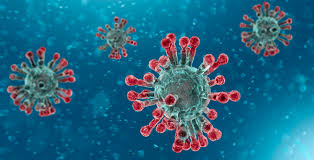Biology – Virus – Notes For W.B.C.S.
A virus is a micro infectious agent, which is found as parasite in the living cells of other organisms.
Virus replicates swiftly inside the living cells of other organisms.
Virus is a Latin term meaning ‘poison’ and other ‘noxious’ liquids.
Viruses can infect any type of life forms, ranging from animals and plants to microorganisms, including bacteria and archaea.
The study of viruses is known as virology.
Virus is first discovered by Dmitri Ivanovsky in 1892.
Virus has the properties of living as well non-living.
One of the living properties is – virus has either DNA or RNA (never both).
One of the non-living properties is – virus has no protoplasm.
Types of Virus
Based on parasitic nature, virus is categorized as −
Animal Virus
Plant Virus
Bacterial Virus
Archaeal Virus
Viral Diseases in Human Being
Following are the list of diseases caused by virus in Human beings −
Chickenpox
Encephalitis
Influenza (or Flu)
Herpes (skin disease)
Human immunodeficiency virus (HIV/AIDS)
Human papillomavirus (HPV)
Infectious mononucleosis
Mumps (measles and rubella)
Shingles
Viral gastroenteritis (stomach flu)
Viral hepatitis
Viral meningitis
Viral pneumonia
Viral Diseases in Plants
Following are the list of diseases caused by virus in plants −
Peanut – Stunt Virus
Maize – Mosaic Virus
Lettuce – Mosaic Virus
Cauliflower – Mosaic Virus
Sugarcane – Mosaic Virus
Cucumber – Mosaic Virus
Tobacco – Mosaic Virus
Tomato – Twisted leaf disease
Lady finger – Yellow vein mosaic
Viral Diseases in Animals
Following are the list of diseases caused by virus in animals −
Cow – Herpes (Herpes virus)
Buffalo – Small pox (Poxverdi orthopox)
Dog – Rabies (Stereit virus)


 +919674493673
+919674493673  mailus@wbcsmadeeasy.in
mailus@wbcsmadeeasy.in






































































































